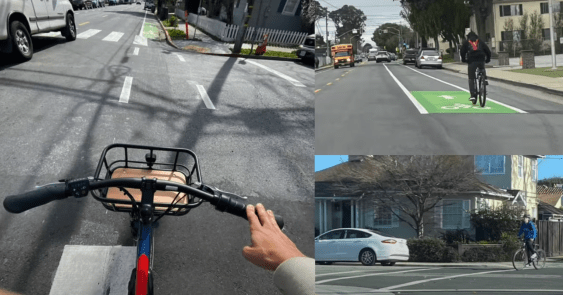Announcing @MTA as our first transit member! Innovative street design is essential for good transit service.https://t.co/NoHXoYTuyv
— NACTO (@NACTO) August 22, 2016
Last week, the Metropolitan Transportation Authority joined the National Association of City Transportation Officials, the federation of local DOTs whose policy guidance and street design manuals are popularizing a more multi-modal approach to urban transportation policy.
Until now, NACTO members have all been city agencies in charge of streets. While some members also operate transit (most notably SFMTA), New York's MTA is the first "transit-only" agency to join.
If more transit agencies follow the MTA's lead, this could be an important precedent with big implications for city streets and transit across the country -- here's why.
Teamwork between streets agencies and transit agencies matters.
This is the angle NACTO emphasized in its announcement. Most city transit service in America runs on streets, and, as former NYC DOT commissioner Janette Sadik-Khan put it, "transit must be designed into the street from the centerline to the sidewalk, not tacked on as an afterthought." To implement service improvements like transit lanes, better bus stops, or signal priority for transit vehicles, DOTs and transit agencies need to collaborate.
Transit agencies need to share expertise. NACTO excels at that.
NACTO's bread and butter is sharing good ideas and helping them spread. Applied to streets, that's come in the form of training, policy guidance, and design manuals about how to make transportation systems more multimodal. More cities are overhauling streets to create safe conditions for walking and biking thanks to NACTO. If other transit agencies follow the MTA and join, the same tactics could accelerate changes that significantly improve service, like redesigning bus networks or procuring modern fare payment systems.
A new type of political muscle for transit.
There's already a transit industry trade group that could be an evangelist for best practices -- the American Public Transit Association. But APTA, with its emphasis on federal lobbying, isn't filling that role. Nor has it made much headway wringing additional funds out of Congress, which is, increasingly, like trying to squeeze blood from a stone.
The MTA withdrew from APTA in May. In a post about that development, TransitCenter called for the transit industry to rethink its approach to advocacy and refocus on the debates "in city halls and state capitols," where its influence could actually tip some scales.
In many ways, NACTO is better suited for that type of advocacy than APTA. Unlike APTA, which is structured to exert influence in Washington, NACTO is structured to distribute expertise between cities. And unlike APTA, NACTO has not spent the last few decades speaking with the same voice as road builders, trying to hang on to a share of the federal transportation funding pie.
Now that the MTA, the largest transit agency in the nation, has landed at NACTO, NACTO might become the new center of gravity for the transit industry's political operations. This is still speculative, but the prospect is intriguing, to say the least. Instead of aligning their political efforts with highway departments that build sprawl infrastructure and sap places of the qualities that enable transit to thrive, transit agencies might align more tightly with cities, whose success is inextricable from their own.





